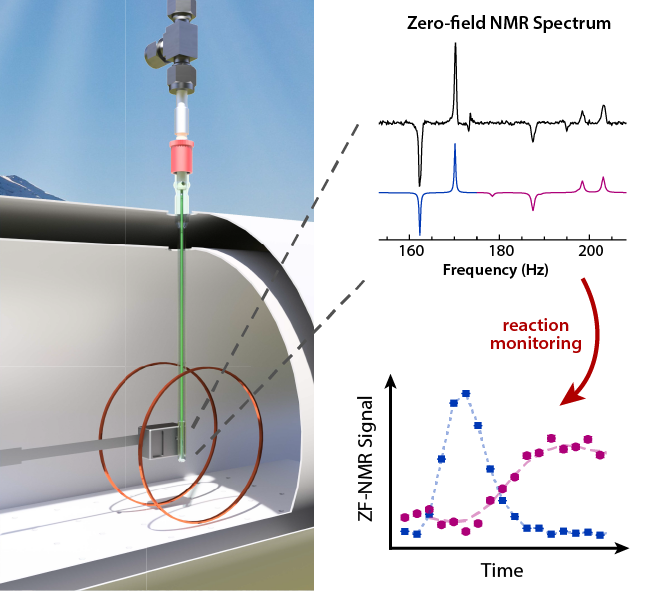High field (HF) NMR is regularly used for chemical reaction monitoring, which has tremendous applications in industry, biology and medicine. In zero- to ultralow-field (ZULF) NMR we perform an unorthodox type of NMR experiment which does not require the usual large magnetic field. In high field NMR, observing complex media inevitably leads to broad spectral lines, limiting the spectral resolution. In addition to this, HF NMR is generally unable to probe samples inside metal containers, because the high frequency radio waves do not penetrate metals.
In our ZULF experiment the magnetic field is homogeneous even in complex media, because it is zero! We therefore obtain narrow lines, and use these to monitor chemical reactions. Furthermore, the low frequency signals in our ZULF NMR experiment readily penetrate metals, and so we were able to study samples in a metal tube. This opens the door to study reactions at very high pressure and high temperature, much closer to real-world conditions, with NMR.
https://onlinelibrary.wiley.com/doi/abs/10.1002/anie.202006266

